Are you laser-focused on converting leads right now, only to find your pipeline sputtering in the long run? You’re not alone. In the complex world of B2B SaaS, it’s easy to fall into the trap of chasing immediate sales while neglecting the bigger picture. Here’s a hard truth: at any given time, only 5% of your addressable market is actively seeking a solution like yours. What about the other 95%?
This article dives deep into the critical balance between demand creation and demand capture, revealing how the 95/5 rule can transform your B2B SaaS marketing strategy. We’ll explore how to effectively target both the ready-to-buy segment and the vast, untapped potential of future customers, ensuring sustainable growth and a healthy pipeline. This guide is designed for B2B SaaS marketers, founders, and executives looking to optimize their marketing efforts and build a robust, long-term strategy.
Understanding the 95/5 Rule in B2B SaaS Marketing
To truly master B2B SaaS marketing, you need to understand the fundamental difference between demand capture and demand creation, and how they relate to the 95/5 rule.
Defining the Core Concepts
- Demand capture: This refers to marketing initiatives aimed at capturing the attention of the 5% of your market that is actively searching for a solution. These prospects are problem-aware, solution-aware, and product-aware, ready to click that “schedule a demo” button.
- Demand creation: This involves educating and introducing your solution to the 95% of potential clients who aren’t ready to buy yet. This segment may be unaware of their problem, not actively seeking a solution, or simply not seeing the immediate need.
The 95/5 rule, popularized by Professor John Dawes of the Ehrenberg-Bass Institute, highlights that most B2B buyers only make purchases occasionally, such as when contracts expire or replacements are needed. Focusing solely on the active 5% means missing out on influencing and priming the much larger segment that will eventually become buyers.
The Evolution of B2B Buying Behavior
The B2B buying journey is no longer a linear path. Today’s buyers are more informed and conduct extensive independent research before engaging with sales. According to recent data, buyers spend 70% of their purchasing process conducting independent research. This shift has several implications:
- Increased complexity: The buying process involves multiple touchpoints and decision-makers, making attribution more challenging.
- Impact of dark social: A significant portion of online sharing occurs through private channels like email and messaging apps, making it difficult to track and attribute demand accurately. These “dark social” channels obscure the true paths of customer journeys and distort lead attribution models.
- Modern buyer research habits: Buyers are increasingly relying on independent research and peer reviews, emphasizing the need for a strong online presence and thought leadership.
Demand Capture: Converting Active Buyers
While demand creation is crucial for long-term growth, demand capture remains essential for generating immediate revenue.
Characteristics of Demand Capture
- Focus on bottom-of-funnel activities: Strategies like paid search, targeted ads, and website conversion optimization aim to convert prospects who are already actively searching for a solution.
- Immediate conversion opportunities: Demand capture tactics are designed to drive immediate action, such as scheduling a demo, requesting a quote, or making a purchase.
- Traditional attribution models: These models typically attribute conversions to the last touchpoint, such as a Google Ads click or a visit to the pricing page.
Key Strategies for Effective Demand Capture
- Paid search optimization: Target high-intent keywords that indicate a buyer is actively seeking a solution.
- Website conversion optimization: Ensure your website is optimized for conversions with clear calls-to-action, compelling landing pages, and a seamless user experience.
- Sales enablement content: Equip your sales team with the resources they need to close deals, such as case studies, product demos, and competitive comparisons.
- Pricing page optimization: Clearly communicate the value of your product and make it easy for prospects to understand your pricing plans.
Demand Creation: Building Future Pipeline
Demand creation is about planting the seeds for future growth by nurturing relationships with potential customers who aren’t yet ready to buy.
Long-term Market Development
- Educational content strategy: Create valuable content that addresses the pain points of your target audience and educates them on the benefits of your solution.
- Thought leadership: Position yourself as an industry expert by sharing insights, best practices, and thought-provoking ideas.
- Brand building initiatives: Invest in activities that build brand awareness and recognition, such as social media marketing, public relations, and community engagement.
- Industry authority establishment: Become a trusted source of information and a go-to resource for your target audience.
Content Formats and Channels
- Blog posts and listicles: Create informative and engaging blog content that targets relevant keywords and provides value to your audience.
- Webinars paired with templates: Offer webinars that provide valuable insights and practical advice, and pair them with downloadable templates that attendees can use to implement what they’ve learned.
- LinkedIn content strategy: Share thought leadership articles, industry news, and engaging content on LinkedIn to reach your target audience.
- Industry publications and associations: Contribute articles and participate in events hosted by industry publications and associations to reach a wider audience and establish your credibility.
Balancing Both Approaches: A Strategic Framework
The most successful B2B SaaS marketing strategies strike a balance between demand creation and demand capture, ensuring both immediate revenue and long-term growth.
Resource Allocation
- 60/40 split (demand creation/capture): A general guideline is to allocate approximately 60% of your marketing resources to demand creation and 40% to demand capture. This split may vary depending on your market maturity and business goals.
- Budget considerations: Carefully consider your budget when allocating resources to demand creation and demand capture. Demand creation activities often require a longer-term investment, while demand capture can provide more immediate returns.
- Team structure and responsibilities: Ensure your marketing team has the skills and resources to execute both demand creation and demand capture strategies effectively.
Measuring Success
- Leading indicators for demand creation: Track metrics such as website traffic, social media engagement, subscriber growth, and content downloads to measure the effectiveness of your demand creation efforts.
- Traditional metrics for demand capture: Monitor metrics such as conversion rates, lead generation, and sales revenue to measure the success of your demand capture activities.
- Self-attribution models: Implement self-attribution models to gain insights into how customers are discovering your brand and what touchpoints are influencing their buying decisions. This involves directly asking buyers how they heard about the brand during key conversion events or through follow-up communications.
- Dark social tracking: Use advanced analytics and tracking codes to identify and measure the impact of dark social sharing. This can involve analyzing unexplained spikes in direct traffic or embedding unique tracking codes in content that is likely to be shared privately.
Market Maturity Considerations
The optimal balance between demand creation and demand capture depends on the maturity of your market.
Early-Stage Markets
- Heavy focus on education: In early-stage markets, where potential customers may not be aware of the problem you’re solving or the solutions available, a heavy focus on education is essential.
- Problem awareness building: Focus on creating content that highlights the pain points of your target audience and educates them on the benefits of solving those problems.
- Category creation challenges: In some cases, you may need to create a new category for your product or service, which requires significant effort and investment.
Mature Markets
- Differentiation strategies: In mature markets, where there are many competing solutions, it’s crucial to differentiate your product or service from the competition.
- Competitive positioning: Clearly communicate your unique value proposition and highlight the advantages of your solution over alternatives.
- Cost-effective acquisition: Focus on cost-effective acquisition strategies that maximize your return on investment.
Implementation Guide
Ready to put these principles into action? Here’s a step-by-step guide to implementing a balanced demand creation and demand capture strategy.
Getting Started
- Assessment Phase
- Market maturity evaluation: Determine the maturity of your market and the level of awareness among your target audience.
- Current demand generation mix: Evaluate your current marketing activities and identify any gaps or imbalances in your demand generation mix.
- Resource availability: Assess your available resources, including budget, team skills, and technology.
- Strategy Development
- Channel selection: Choose the channels that are most effective for reaching your target audience and achieving your marketing goals.
- Content planning: Develop a content plan that addresses the needs of your target audience at each stage of the buying journey.
- Attribution setup: Implement attribution models to track the effectiveness of your marketing activities and optimize your strategy.
Common Challenges and Solutions
- Budget constraints: Prioritize the most cost-effective strategies and focus on activities that provide the greatest return on investment.
- Attribution difficulties: Use a combination of traditional attribution models, self-attribution models, and dark social tracking to gain a more complete picture of your marketing effectiveness.
- Timeline expectations: Set realistic expectations for the timeline required to see results from your demand creation efforts.
- Stakeholder buy-in: Communicate the value of a balanced approach to stakeholders and demonstrate the potential for long-term growth.
Future Trends and Considerations
The B2B SaaS marketing landscape is constantly evolving, so it’s important to stay ahead of the curve and adapt your strategies accordingly.
Evolution of B2B Marketing
- AI’s impact on content discovery: Artificial intelligence is playing an increasingly important role in how people discover and consume content, so it’s essential to optimize your content for AI-powered search engines.
- Privacy considerations: Growing privacy regulations are limiting the amount of data that marketers can collect, so it’s important to respect user consent and focus on building trust with your audience.
- Channel effectiveness changes: The effectiveness of different marketing channels is constantly changing, so it’s important to continuously test and optimize your strategies.
Adaptation Strategies
- Technology integration: Integrate new technologies into your marketing stack to improve efficiency and effectiveness.
- Measurement evolution: Continuously evolve your measurement strategies to keep pace with changes in the marketing landscape.
- Skill development needs: Invest in training and development to ensure your marketing team has the skills they need to succeed in the future.
In short
A balanced approach to demand creation and demand capture is essential for long-term success. By understanding the 95/5 rule and implementing the strategies outlined in this article, you can build a robust pipeline, drive sustainable growth, and position your company for long-term success.
Don’t wait – start implementing these strategies today and unlock the full potential of your B2B SaaS marketing efforts. Are you ready to revolutionize your approach and capture both immediate and future demand?

